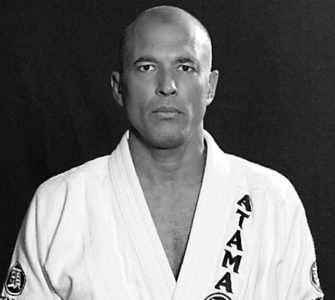There are very few combat arts that require both your physical and mental competency or test your intelligence and stamina all at once; Brazilian Jiu-Jitsu is one of them. That means you have to be physically strong and flexible as well as mentally fast and calculating. There might be various reasons that interested you about Brazilian Jiu-Jitsu (BJJ). Perhaps it was all the hype in the UFC or how almost every UFC fighter is trained in BJJ. Or the prospect of learning combat that helps to topple an opponent without hurting anyone has enticed you about BJJ.
And you are not alone in this, almost every city has a BJJ training gym and sports enthusiasts are lining up every day to get admitted to some BJJ training program. However, learning the art of BJJ is not an easy feat. For one, you have to be highly dedicated to your training. And need some special BJJ gears for a better training experience. Here we will explore the basic gears you will need for BJJ training.
Traditional GI BJJ and No GI BJJ
Before we move on to what gear you need for the training, you have to know there are two types of BJJ training available. One is traditional BJJ which requires BJJ GI for grappling. The other one is the no GI BJJ that allows you to grapple without a GI. While GI BJJ is more in tune with the Japanese Jiu-Jitsu, it requires you to learn more techniques. On the other hand, no GI BJJ is much fast-paced as you don’t have to learn the holding technique of the GI suite. We are going to discuss what fitness gear you will need for both of these versions.
BJJ GI
The traditional uniform for BJJ is known as GI or BJJ kimono. It is a combination of cotton drawstring pants, a top, and a belt. The name GI originated from the Japanese words “keikogi” or “dogi”. It is Japanese for training uniforms. For traditional BJJ wearing a GI is essential, as a lot of techniques involve learning to grab hold of the opponents’ GI to knock them down on the ground.
The GI adds an extra challenge to the sport, it can either work as an advantage for you or as your weakness. If you opt for a no GI BJJ grappling, you will miss out on the opportunities to learn how to control your opponent by grabbing their BJJ.
Many manufacturers produce BJJ GI, and they are of varying materials and weight. As a beginner, you might have to spend around $100 for a medium weight, quality GI.
Rash Guards
As the name suggests, a rash guard provides you protection against rash, cut, and scrapes. As BJJ grappling usually takes place in the gym mat, you are bound to develop rash or scrapes if you go without a barrier between you and the coarse gym mat. Rash guards can be worn both in GI BJJ and no GI BJJ.
You can find spandex or polyester rash guards for BJJ training. These materials are good sweat absorbers, which keeps your GI sweat-free.
BJJ Belts
Professional combat arts like karate or BJJ requires you to have a belt that symbolizes your rank in the sports. Even if you are a beginner you have to wear a belt in your BJJ training. As you are starting, you will be assigned with a white belt and can move on to the next level over time. As your mastery of the art grows, so will your rank. According to the International Brazilian Jiu-Jitsu Federation (IBJJF), the ranking system follows this sequence-
- White belt
- Blue belt
- Purple belt
- Brown belt
- Black belt
- Red and black belt
- Red and white belt
- Red belt
Graduating from a beginner’s white belt to a black belt might take ten years or even more if your training is sporadic. As a beginner, your GI might come with a free white belt.
Grappling Shorts or Grappling Spats
Grappling shorts or spats are required for no GI BJJ. BJJ spats work similarly to the rash guard to protect your legs from developing a rash and contacting bacteria from gym mats. You can also wear spats underneath your GI. BJJ shorts are slide proof and free of any pockets or metal features- zippers, or buttons. Both grappling shorts and spats are designed for maximum flexibility and movement. Depending on your preference and comfort, you can wear either of them in your BJJ training.
Mouth Guard
You need a mouth guard to protect your teeth and tongue. On the off chance that you get hit in the mouth, or bite your tongue accidentally, it will save your teeth and tongue. You can find custom-made mouth guards that mold with your mouth. But as a BJJ beginner, you might want to consider mold at home or some other variations.
Groin Guard
Wearing a groin guard is optional for your training. However, you can never be too protective when it comes to a groin injury. It will just take a few seconds for you to get hit by a foot, knee, or even an elbow in that area, and you will regret not wearing a groin guard.
Besides, you must wear one while practicing sensitive movements like passing the guard. So better be safe than sorry. Even if it makes you uncomfortable or hinders your flexibility at first, you will get used to it.
Knee Pads
The frequent grappling and rolling around on the gym mat can take its toll on your knee. And the epidermis on the skin area is very thin and sensitive. To avoid getting skin burns, scars, and scrapes you should consider protecting your knees by wearing knee pads. Make sure you get a pair of knee pads that fit well under your GI trouser and don’t restrict your flexibility.
Head Guard and Ear Guards
The head is one of the most injury-prone and delicate parts of the human body. While grappling, your head might violently come into contact with the hard gym floor, and you want gear to protect your skull. Besides, being repeatedly hit on the side of your head can give you a serious case of cauliflower ear. So invest in an ear guard to protect your ear and head.
The Bottom Line
Apart from these BJJ gear, you should also invest in some other types of equipment for your training. For instance, you might need a roll of athletic tape in your BJJ bag; it will come in handy to protect your knuckles from being scraped. Also, keep a muscle spray in your gym bag to relieve your sore muscles after a heavy training session. Whether you opt for a GI BJJ or a no GI BJJ, make sure you don’t go grappling without all your protective gears on. And don’t forget to wash all your BJJ gears after training; staying hygienic and taking precautions will save you from injuries and diseases.



















